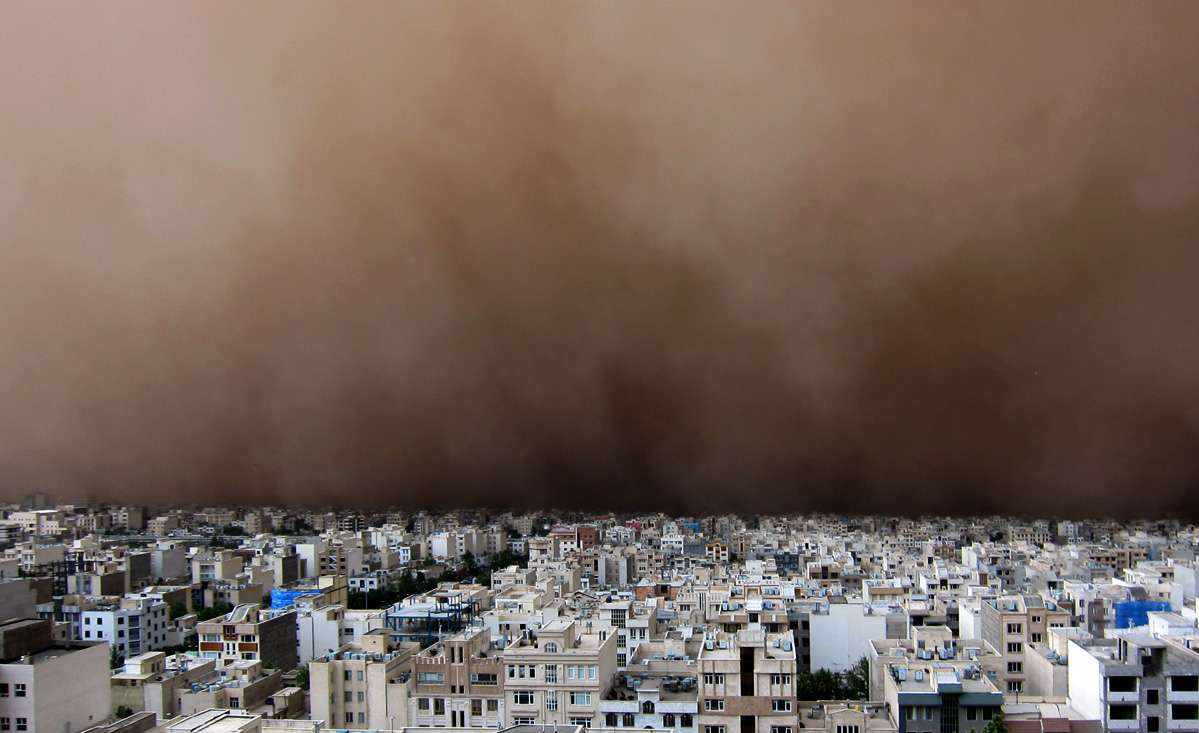The Iranian national workgroup to combat dust storms has put it on its agenda for this year to prepare a joint comprehensive scheme in cooperation with Syria and Iraq under the oversight of the United Nations Development Program.
According to Ali Mohammad Tahmasbi Beiragani, director of the workgroup, the purpose of the four-way collaboration will be to restrain dust storm sources located outside Iran's borders.
"An international agreement can compel the neighboring countries to initiate restorative operations and take a step toward containing the hotspots that affect our country," he told IRNA.
If signed, such a document will make a significant contribution to efforts aimed at mitigating dust storms in the southwestern province of Khuzestan which is seriously affected by dust storms emanating from both domestic and foreign sources.
"Since 1997, several memoranda of understanding have been signed with Turkey, Iraq, Syria, Qatar and Bahrain in this regard, but none were binding enough. Therefore, we decided to pursue the matter through the international community to secure assurance that the commitments will be fulfilled," the official said.
The required budget for the projects will be supplied by the three states and Iran's share will be provided from allocated funds for Khuzestan to tackle dust storms, he added.
Other Objectives
Another project of the workgroup for this year, according to the official, is to carry out research to identify the foreign sources that affect Iran's southwest in cooperation with the Meteorological Organization.
The national workgroup is conducting comprehensive studies on the phenomenon of sand and dust storms in the provinces of Kerman, Sistan-Baluchestan and Hormozgan as well as Khuzestan.
Beiragani said the research is expected to be complete by the end of the current Iranian year (ends March 20, 2019) or early next year.
The United Nations issued a resolution on combating sand and dust storms in 2016 in which it recognized Iran's hosting of an international event on the subject in July 2017.
Erik Solheim, executive director of the United Nations Environment Program, who was attending the conference, made a trip to Ahvaz and said priority would be given to this region in UNEP's plans.
Khuzestan's Plan
The comprehensive scheme for Khuzestan Province will be put into action in November, according to Beiragani.
"After approval in the provincial workgroup, the scheme will be reviewed by the national workgroup and can then be implemented… This is predicted to be around November," he said.
The national workgroup has conducted studies but no action plan had been prepared prior to this scheme.
Regarding the operations currently underway, Beiragani explained that they are emergency measures to prevent the exacerbation of the phenomenon before embarking on a well-thought-out plan.
A budget of $150 million has been earmarked from the National Development Fund for Khuzestan's dusts storms, $50 million of which is for renovating the electricity network.
The remaining $100 million will be used to control the environmental disaster.
"The General Governorate has been put in charge of implementing the plan… 1.05 trillion rials ($25 million) of the budgetwere disbursed around 10 days ago," the official said.
Khuzestan is home to over 700 hectares of dust storm hotspots.


